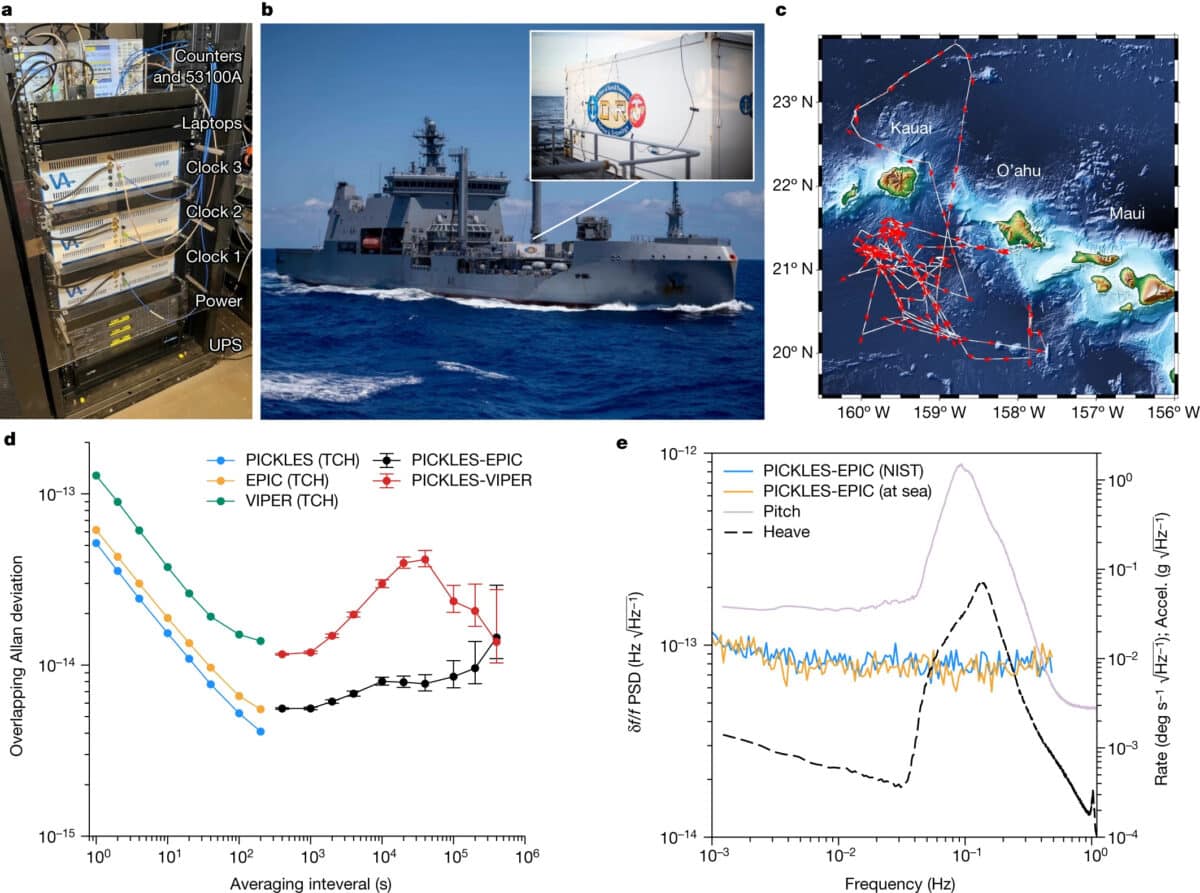American physicists have developed a compact optical clock based on molecular iodine. Three weeks of testing in the open sea showed that they were highly stable and insensitive to the external environment; This improves maritime navigation possibilities. We live in a four-dimensional space where three dimensions are height, width and length, and the fourth is time. Modern science is trying to recognize these areas as precisely as possible.
People have already learned to measure distances in nanometers and time in attoseconds. These units power today’s most accurate clocks by relying on electromagnetic radiation created when electrons in cesium atoms move from one “orbit” to another.
An atomic clock measures time to an accuracy of 10^-18 (i.e. quintillionths of a second). If you compare its readings with the exact time signal from a satellite or a distant fixed clock, you can see changes in the speed of time due to a change in the strength of the gravitational influence (for example, due to a change in altitude above). Sea level). As is known from the theory of relativity, the stronger the gravitational force at any point in space, the slower time flows.
You can increase the accuracy of the clock if you take a few atoms and make an atomic optical lattice from them (strontium or thulium is used for this). Atoms in such lattices are “shot” by lasers, which makes it possible to deeply cool the entire lattice and reduce interatomic vibrations in it to the limit, increasing the accuracy of measurements. Such accuracy is necessary not only for purely scientific research in fundamental physics, but also for navigation.
Millions of devices connected to GPS or Global Navigation Satellite System (GNSS) satellites continue to operate because their orbiters are synchronized at the nanosecond level with the atomic clock. This allows you to determine coordinates with an accuracy of several meters. But such a result is easy to obtain only in laboratories. This is difficult to achieve in field conditions (for example, on seagoing ships, which require particularly stable and accurate coordinates) because storms occur at sea and ships pass through the Earth’s magnetic fields.
A group of physicists from Vector Atomic in the United States has developed a molecular iodine-based optical clock for mobile platforms that is not sensitive to the external environment. The researchers first produced this watch in a laboratory, then tested three devices at sea for 20 days. The results of the scientific study are published in the journal. Nature.
Iodine has long been known as an optical frequency standard with a wavelength of 532 or 1064 nanometers and a precision of 10-10, which is just above nanoseconds. For example, in a ballistic gravimeter, an iodine cell laser is used to measure the acceleration of free fall. In a new study, physicists built a clock with a laser system that isolates iodine vapors. In this way, according to scientists, the structure does not require laser cooling, pre-stabilization and is insensitive to movement. The researchers chose molecular iodine because a device powered by ions or atoms would be more expensive, heavier, larger and less reliable. But the new clock, although it turned out to be compact – it has a volume of only 35 liters and a weight of 26 kilograms – is not as accurate as an atomic clock.
The first three devices (PICKLES, EPIC, and VIPER (which are slightly simpler)) were tested in Colorado in 2022 and their performance was compared to NIST’s 34-day universal time scale. The frequency shift of the new clock was naturally greater than that of the atomic standard; only 300 picoseconds (300 trillionths of a second) per day.
Satisfied with this laboratory result, the physicists sent their watches to Pearl Harbor to be tested at RIMPAC, the largest naval exercise. The devices were securely fixed to the floor of the cargo container where the air conditioning operated and remained untouched for three weeks (only VIPER had to be restarted due to a power outage). In field conditions, the temperature fluctuated by 2-3°C, the humidity by 4-5%, and the ship shook and trembled during movements.
During 20 days at sea, the watch showed no deviations in characteristics at intervals of as little as a thousandth of a second. The PICKLES-EPIC pair maintained volatility equivalent to 400 picoseconds per day (400 trillionths of a second). The drift speed was the same as in the NIST atomic clock. VIPER showed both short-term and daily instability, but scientists made the clock simpler.
In other words, if the new clock installed on the ship loses contact with the external clock, that is, the satellites, the delays will be minimal and the accuracy will continue to be within nanoseconds. This makes the molecular iodine optical watch the highest performing marine watch today. They are minimally sensitive to the external environment (although air conditioning can distort the background a bit), are robust and compact.
Source: Port Altele
